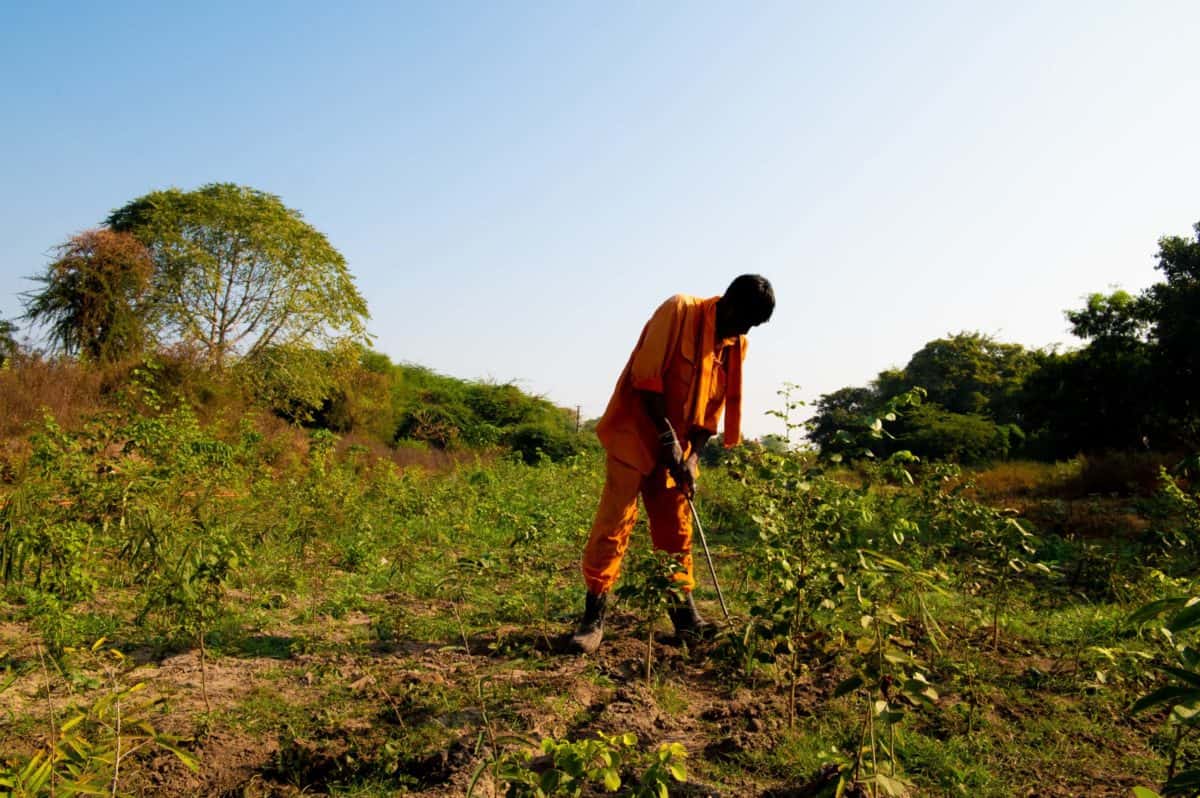Sterlite Techonolgies
UN SDG 6 connects sustainable management and equitable access to clean water resources with the livelihood, health, and food security of millions of families worldwide. With climate change and soaring temperatures, the dire state of water resilience moved the General Assembly to make an urgent appeal to the private sector to contribute with public agencies in taking up sustainable water development as part of the 2030 Agenda.
STL’s environment conservation programme for strengthening communities to ensure water safety and security while driving demographic changes, implemented in partnership with the Maharashtra Village Social Transformation Foundation (VSTF), the Government of Maharashtra and several other local administrative bodies, is a response to that immediate call to action. The programme aims to transform drought-prone Aurangabad, into a water-resilient region. It adopts a time-bound, mission-mode approach to water conservation, on the principles of the Jal Shakti Abhiyan and SDGs 6, 13 and 17 primarily.
Secure access to clean water and year-round availability is a pivot of STL’s programme, which seeks to generate transformative impacts by:
- Strengthening community institutions like women-led self-help groups and farmer-producer groups for improved livelihood.
- Promote efficient water use in sectors like agriculture, irrigation, and animal husbandry
- Plan and implement integrated water management and improve water access and stewardship through reuse-and-recycle
- Renovate traditional water bodies and perform intensive afforestation
The programme is driven by user groups and women, who engage with rural youths to act on water literacy, water budgeting, and sustainability. The capacities of Jal Doots (block and district water coordinators) are also built on these aspects to ensure efficient and effective implementation. The programme leverages technical assistance and collaboration from various public agencies and local governance bodies like the District Mission Councils and Gram Sabhas.
Problem Statement
The district of Aurangabad aptly captures India’s water crisis, with precipitation below the national average and prolonged droughts that have perilously depleted its water reserves. As reported in the NITI Aayog, Multidimensional Poverty Index, the water stress issue has compounded other impediments to growth, with more people still being deprived of the basic necessities of life. Furthermore, Aurangabad is one of the few Indian districts with a depleting forest cover, creating unique complexities for local communities. It is also an industrial area where water forms an integral part of manufacturing processes, and in most cases is not used optimally or treated and discharged into community water bodies. Understandably, the district is ideal for testing a community-driven water resilience programme.
Intersectionality with a Comprehensive Approach
STL’s programme encourages the participation of all community members of a diverse range, which includes women, youth, and farmers. The programme aims to strengthen the community base in Aurangabad to promote quality education on the efficient use of precious resources, gender justice, WASH solutions and enhancement of green cover. While achieving water positivity and resilience (SDG 6) remains the key goal, the programme operates multi-dimensionally focusing on other SDGs like 1, 5, 8, 9, 10, 11, 12, 13, 15 and 17. The programme also ensures the holistic development of rural areas through infrastructure improvements, circularity, and ecosystem protection by helping farmers transition to sustainable agricultural practices.
Livelihoods
This programme leveraged convergence funding by aligning with Village Action Plans under the Jal Jeevan Mission to ensure its interventions translate into holistic change. It had brought Functional Household Tap Connections to over 5,200 rural households with a service level rate of 55 litres per capita per day, guaranteeing the last-mile delivery of clean and safe drinking water.
The piped water supply infrastructure and other vital developments were delegated to Gram Panchayats or Paani Samitis (water committees) to inculcate community ownership for the execution, long-term operation and maintenance of the assets. Extensive awareness-building exercises were performed to introduce key local decision-makers to government schemes and initiatives like the Atal Bhujal Yojna, Mahatma Gandhi National Employment Guarantee Act, National Rural Livelihood Mission, National Horticulture Mission, POCRA (the Project on Climate Resilient Agriculture) Scheme, Jal Jeevan Mission, Pradhan Mantri Krushi Sinchan Yojana, and the Magel Tyala Shet Tale Yojana.
Agriculture
The programme also engaged with approximately 50 farmers who were educated and encouraged to adopt micro-irrigation systems to promote sustainable agricultural practices and improve water management on their farms. The programme facilitated the provision of financial aid to them under the POCRA scheme for investing in drip and sprinkler irrigation. They were rigorously trained on the system’s operation and maintenance, bringing 79 hectares of land under sustainable agricultural practices.
The region’s green cover was significantly enhanced by undertaking afforestation across 6 acres of barren land and dump sites. Over 169,000 trees were planted across these 6 acres in partnership with the Aurangabad Municipal Corporation, Cantonment Board, Social Forestry Department, Ministry of Forest Revenue and Forests, Mumbai Irrigation Department, and Gram Panchayats.
A series of other ecologically friendly activities were undertaken, such as awareness drives on household solid waste management in partnership with the local administration in Adgaon Bk, and completing construction of the cement ‘nala’ dam in partnership with the Zilla Parishad Irrigation Department in Adgaon Bk, which led to better conservation of rainwater and helped farmers grow twice as much produce.
Training and awareness programmes were also conducted in 8-gram panchayats on issues ranging from rainwater recharge and rehabilitating old water resources and groundwater recharge structures to community empowerment through water resilience. We ensured the benefits of government schemes could be leveraged toward total community development. Today, youth in these villages earn a salary of Rs. 10,000 per month.
Implementation
As part of the programme, STL approached key stakeholders explaining its benefits and simultaneously created a baseline survey to identify the pressing issues faced by the residents of the affected villages. This was followed by securing the necessary approvals and buy-in from the gram panchayats and government departments. Adequate local representation and community connection were maintained through the Jaldoots and women-led self-help groups.
An orientation meeting aimed at introducing the programme and driving the active participation of village-level government staff was conducted, involving stakeholders from all eight gram panchayats of the Aurangabad block. It became a platform for idea exchange and deliberation on how best to implement the programme.
Using community involvement, STL and VSTF constructed and revamped 85 water storage and harvesting structures, replenishing over 1.4 MCM of water in FY22. Besides increasing the water level in local wells by 30-40 feet they prevented the flooding of water bodies and soil erosion. Convergence funding and partnerships were extensively leveraged to continuously finance the programme efforts and ensure timely permission and compliance, benefitting over 100,000 lives since its inception in 2020.
For knowledge transfer and programme continuity, training on ‘Water Quality Monitoring and Surveillance’ was jointly conducted by the Water and Sanitation Department of the Aurangabad Zila Parishad and VSTF. It focused on water resource sanitation surveys, collecting water samples for quality tests, using Field Test Kits for water quality tests, using the Jalsuraksha Mobile App to geotag water resources, monitoring and surveillance of all drinking water sources, and finally, the importance of community participation.
Impact Measurement
We have devised a comprehensive and practical programme evaluation matrix to assess, correlate and measure the programme impact. It factors in variables like the number of women-led community institutions trained, youth trained and engaged in programme-relevant actions, water harvesting structures created and the increase in storage capacity, and an estimation of the households that now enjoy access to safe and clean water. Ultimately, alongside groundwater replenishment and levels increment, the programme also seeks to measure total coverage through plantations and showcase water resiliency over a 5 year period.
Scalability
The programme is designed as a scalable and inclusive solution that can engage communities, corporates and the local administration to bring a socioeconomic healing touch to water-stressed regions in India. Despite the many challenges to such efforts, from geographical and cultural barriers, rising costs, technical limitations and perception gaps to a lack of collaboration and knowledge transfer, STL and its partners have been steadfast and persuasive. We are pulling at blended finance as one of the strategic levers to converge and effectively channel public and private sector finances towards the buildup of water resilience. And our attempts have been ceaseless in forging impactful partnerships and setting better examples to inspire the existing and upcoming generations of policymakers and executives across sectors, to act with the urgency that the inalienable human right of access to clean water truly deserves.



















